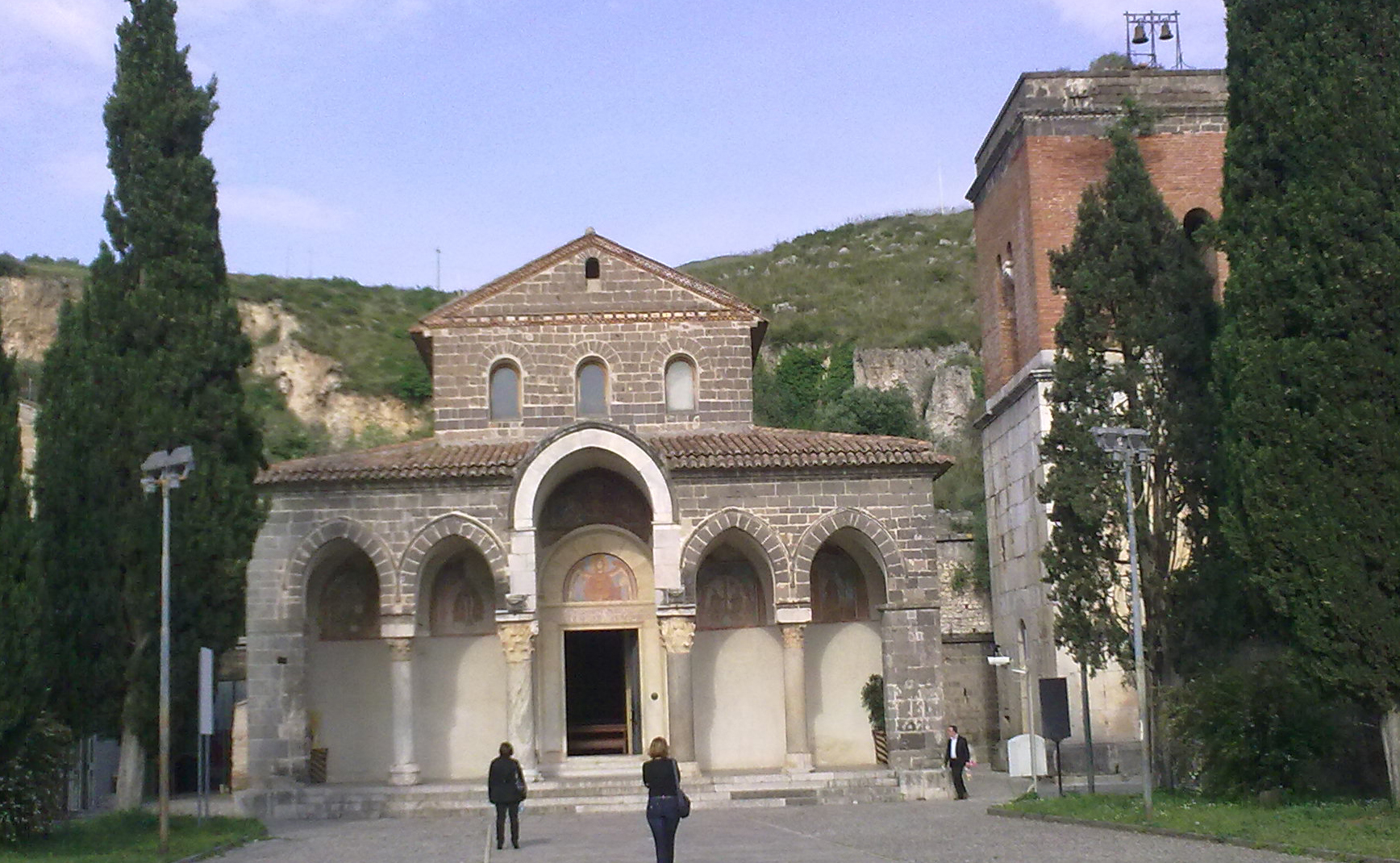Sant'Angelo in Formis on:
[Wikipedia]
[Google]
[Amazon]
 Sant'Angelo in Formis is an abbey in the municipality of
Sant'Angelo in Formis is an abbey in the municipality of
Sant'Angelo in Formis and the Ancient Capua
{{Authority control Angelo Angelo Capua Angelo in Formis Romanesque architecture in Campania Archaeological sites in Campania
 Sant'Angelo in Formis is an abbey in the municipality of
Sant'Angelo in Formis is an abbey in the municipality of Capua
Capua ( , ) is a city and ''comune'' in the province of Caserta, in the region of Campania, southern Italy, situated north of Naples, on the northeastern edge of the Campanian plain.
History
Ancient era
The name of Capua comes from the Etrus ...
in southern Italy
Italy ( it, Italia ), officially the Italian Republic, ) or the Republic of Italy, is a country in Southern Europe. It is located in the middle of the Mediterranean Sea, and its territory largely coincides with the homonymous geographical ...
. The church, dedicated to St Michael
Michael (; he, מִיכָאֵל, lit=Who is like El od, translit=Mīḵāʾēl; el, Μιχαήλ, translit=Mikhaḗl; la, Michahel; ar, ميخائيل ، مِيكَالَ ، ميكائيل, translit=Mīkāʾīl, Mīkāl, Mīkhāʾīl), also ...
the Archangel, lies on the western slopes of Monte Tifata.
History
The church was once referred to as ''ad arcum Dianae'' ("near the Arch of Diana"), as it lies on the remains of aRoman temple
Ancient Roman temples were among the most important buildings in Roman culture, and some of the richest buildings in Roman architecture, though only a few survive in any sort of complete state. Today they remain "the most obvious symbol of ...
to that goddess.
The church was built in the eleventh century by Desiderius
Desiderius, also known as Daufer or Dauferius (born – died ), was king of the Lombards in northern Italy, ruling from 756 to 774. The Frankish king of renown, Charlemagne, married Desiderius's daughter and subsequently conquered his realm. Des ...
, the abbot of Monte Cassino
Monte Cassino (today usually spelled Montecassino) is a rocky hill about southeast of Rome, in the Latin Valley, Italy, west of Cassino and at an elevation of . Site of the Roman town of Casinum, it is widely known for its abbey, the first ho ...
, who also rebuilt that abbey. At Monte Cassino the decoration was carried out by Byzantine
The Byzantine Empire, also referred to as the Eastern Roman Empire or Byzantium, was the continuation of the Roman Empire primarily in its eastern provinces during Late Antiquity and the Middle Ages, when its capital city was Constantinopl ...
(Greek) artists hired from Constantinople
la, Constantinopolis ota, قسطنطينيه
, alternate_name = Byzantion (earlier Greek name), Nova Roma ("New Rome"), Miklagard/Miklagarth (Old Norse), Tsargrad ( Slavic), Qustantiniya ( Arabic), Basileuousa ("Queen of Cities"), Megalopolis ( ...
and the decoration of Sant'Angelo displays a mingling of the Byzantine (Eastern) and Latin (Western) traditions.Hall, James. A History of Ideas and Images in Italian Art. London, 1983. pp107 & 134 The frescos were painted by Greek artists and by Italian pupils trained in their methods.
Decoration
Examples of the mingling of Byzantine and Latin styles (as cited by James Hall) include: 1. The " lunette over the entrance with a half-length figure of St. Michael and above him an orantVirgin
Virginity is the state of a person who has never engaged in sexual intercourse. The term ''virgin'' originally only referred to sexually inexperienced women, but has evolved to encompass a range of definitions, as found in traditional, modern ...
in a medallion supported by flying angels, with an inscription in Greek on the lintel at the foot. The treatment is wholly Byzantine except for the Latin motif of a crown on the Virgin's head".
2. The evangelists
Evangelists may refer to:
* Evangelists (Christianity), Christians who specialize in evangelism
* Four Evangelists, the authors of the four Gospel accounts in the New Testament
* ''The Evangelists
''The Evangelists'' (''Evangheliştii'' in Roma ...
around the enthroned Christ in the Apse
In architecture, an apse (plural apses; from Latin 'arch, vault' from Ancient Greek 'arch'; sometimes written apsis, plural apsides) is a semicircular recess covered with a hemispherical vault or semi-dome, also known as an '' exedra''. ...
are in the form of the four symbolic creatures of the Latin tradition, rather than being shown as figures (often seating at writing desks) in the Greek manner.
3. Subjects from the Old Testament and New Testament
The New Testament grc, Ἡ Καινὴ Διαθήκη, transl. ; la, Novum Testamentum. (NT) is the second division of the Christian biblical canon. It discusses the teachings and person of Jesus, as well as events in first-century Chri ...
line the walls of the nave
The nave () is the central part of a church, stretching from the (normally western) main entrance or rear wall, to the transepts, or in a church without transepts, to the chancel. When a church contains side aisles, as in a basilica-type ...
. The content of individual scenes and the grouping of figures is described by Hall as being "typically Byzantine", but the whole forms an historical narrative series on the Western model, evidently just as in the basilicas
In Ancient Roman architecture, a basilica is a large public building with multiple functions, typically built alongside the town's forum. The basilica was in the Latin West equivalent to a stoa in the Greek East. The building gave its nam ...
of early Christian Rome
, established_title = Founded
, established_date = 753 BC
, founder = King Romulus (legendary)
, image_map = Map of comune of Rome (metropolitan city of Capital Rome, region Lazio, Italy).svg
, map_caption ...
.
References
External links
Sant'Angelo in Formis and the Ancient Capua
{{Authority control Angelo Angelo Capua Angelo in Formis Romanesque architecture in Campania Archaeological sites in Campania